
A platform that encourages healthy conversation, spiritual support, growth and fellowship

NOLACatholic Parenting Podcast
A natural progression of our weekly column in the Clarion Herald and blog

The best in Catholic news and inspiration - wherever you are!
Byzantine Catholic Church quietly serving for 45 years
-
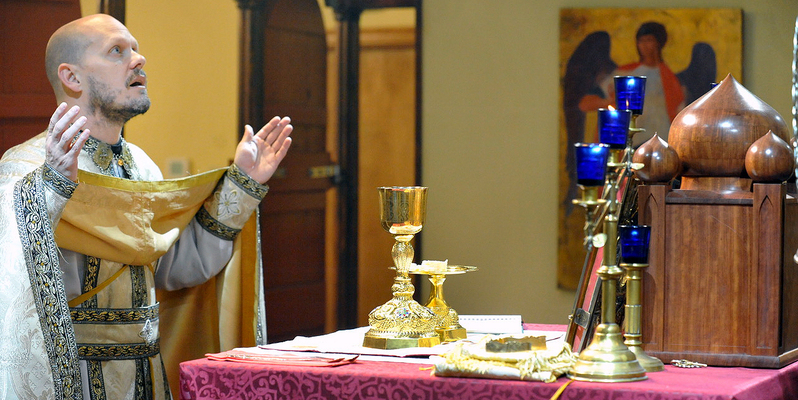
By Peter Finney Jr.
Clarion HeraldJust a few blocks from Notre Dame Seminary, a core group of about a dozen Eastern-rite Catholics in communion with Rome worship every Sunday in a chapel adorned with icons of Jesus, Mary and the saints.
(See video here)For the last 22 years of its 45-year existence, St. Nicholas of Myra Byzantine Catholic Mission Church at 2435 South Carrollton Ave. – located in a former savings and loan building that has been beautifully adorned with iconography and stained glass – has been a sacred space filled with the bells and incense that most Latin-rite Catholics would associate mainly with Christmas or Easter liturgies.
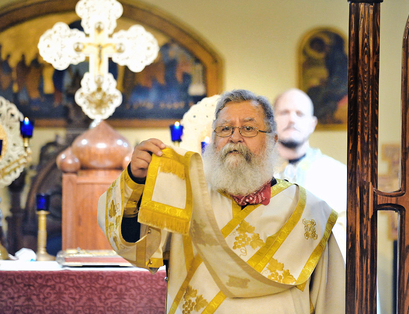 Each Sunday at 10 a.m., St. Nicholas celebrates the Eastern rite’s Divine Liturgy – the term for Mass. Father Nile Gross, associate academic dean at Notre Dame Seminary, has faculties to celebrate the liturgy, assisted by Deacon Gregory Haddad of the Diocese of Houma-Thibodaux, who was ordained in 1996 and has been the administrator of the Byzantine mission for the last 25 years.
Each Sunday at 10 a.m., St. Nicholas celebrates the Eastern rite’s Divine Liturgy – the term for Mass. Father Nile Gross, associate academic dean at Notre Dame Seminary, has faculties to celebrate the liturgy, assisted by Deacon Gregory Haddad of the Diocese of Houma-Thibodaux, who was ordained in 1996 and has been the administrator of the Byzantine mission for the last 25 years.Pittsburgh ‘archeparchy’
St. Nicholas, which uses the Ruthenian rite, is part of the Byzantine Catholic Archeparchy (Archdiocese) of Pittsburgh – one of four Byzantine Catholic eparchies in the U.S. The Pittsburgh archeparchy has 79 churches in Pennsylvania, Ohio, Texas, Tennessee, West Virginia and Louisiana. St. Nicholas is the only Byzantine Catholic church in Louisiana. Archbishop William Skurla, who lives in Pittsburgh, is the metropolitan archbishop.“This church is for all those who have Eastern cultural background who are also in line with Rome,” Father Gross said. “There’s no other place for them to go (in Louisiana).”
The mission was begun in 1976 by the late Marist Father Ellis DePriest, who taught at Notre Dame Seminary and had developed an interest in Eastern rites when he was teaching liturgy in the 1960s at Catholic University in Washington, D.C. He would take seminarians to various Eastern-rite churches in D.C. to expand their horizons.
But when he returned to Notre Dame in 1976, there were no Eastern-rite churches in New Orleans. Father DePriest found a bi-ritual priest – Salesian Father Francis Twardzik – who was stationed at St. Rosalie in Harvey.
Archbishop Philip Hannan gave approval for the celebration of the Divine Liturgy in the seminary chapel, and word spread to the point that 50 people began attending each Sunday. When Father Twardzik was transferred to another assignment, Father DePriest followed Archbishop Hannan’s advice and applied for his own faculties to celebrate the Byzantine rite.
Various priests celebrated
The Div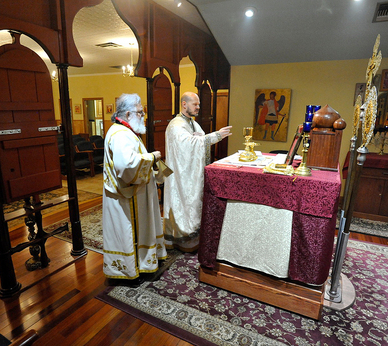 ine Liturgy moved in 1981 to the former Dominican College chapel and again in 1984 to the former chapel of St. John Prep. In addition to Father DePriest, other celebrants over the last 30 years have included Father Stanley Klores, Jesuit Father James Deshotels and Josephite Father Phillip Linden, who recently had to step down because of declining health.
ine Liturgy moved in 1981 to the former Dominican College chapel and again in 1984 to the former chapel of St. John Prep. In addition to Father DePriest, other celebrants over the last 30 years have included Father Stanley Klores, Jesuit Father James Deshotels and Josephite Father Phillip Linden, who recently had to step down because of declining health.As a seminary professor and director of the archdiocesan Office of Worship with a strong interest in liturgy, Father Gross volunteered to study and subsequently received permission to celebrate the Byzantine liturgy.
The Byzantine liturgy uses English throughout, but there are some major differences with the Roman rite. The priest uses different vestments and faces the altar to the east – “ad orientem” – with his back to the congregation, except when he is addressing them.
Before the Gospel is proclaimed by Deacon Haddad, Father Gross chants three times, “Let us be attentive,” to emphasize the importance of God’s word.
Incense is used at various times. The thurifer has several strands of bells that chime when the incense is used during the Gospel procession and offertory.
Holy Communion is distributed under both species. Unlike in the Roman rite, the bread is thick and unleavened – not flat wafers – and is cut up into small pieces before the liturgy. The morsels of consecrated bread are placed in the chalice with the Precious Blood, and the celebrant uses a long-handled, gold spoon to distribute Communion.
Instead of a chasuble, the celebrant uses a vestment that looks like a cope (or cape).
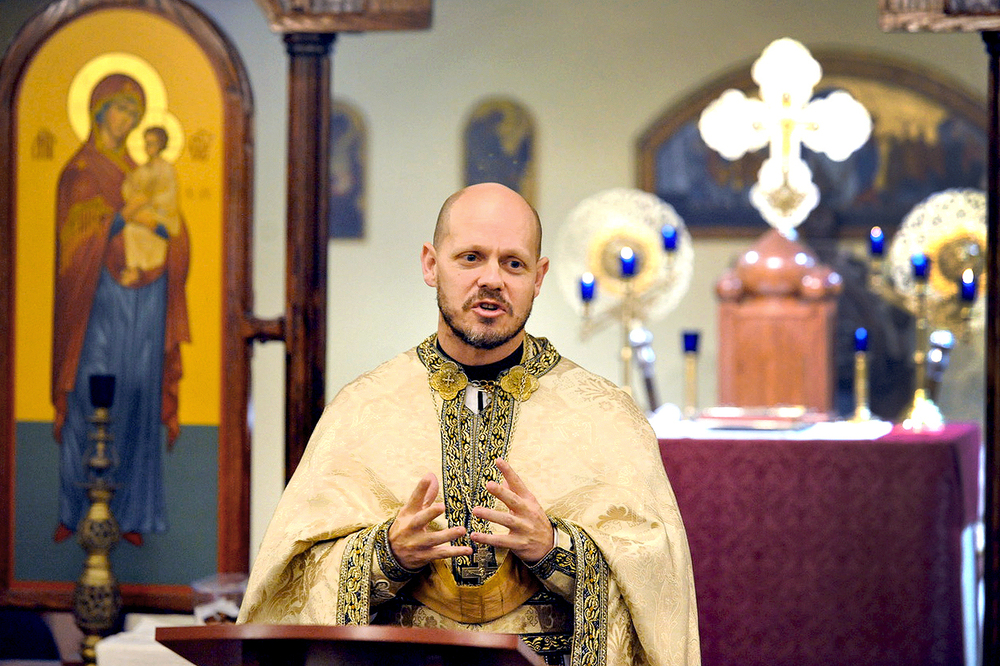
The Byzantine church year begins with the nativity of Mary and ends with the dormition of Mary – “Mary is the symbol of the church,” Father Gross said – and the weekly readings are different from the three-year, rotating schedule of readings in the Roman rite.Last Sunday’s Gospel reading was the Parable of the Prodigal Son, the second of three Sundays leading up to Lent, which this year in the Byzantine calendar will begin on Sunday, Feb. 14.
The Lenten fast – called the “Season of the Great Fast” – is more stringent than Roman-rite Catholics adhere to: the “simple” fast requires abstinence from meat on all Wednesdays and Fridays; the “strict” fast forbids meat, dairy, olive oil and eggs on those days, in addition to “Pure Monday” (Feb. 15) and “Great and Holy Friday” (April 2).
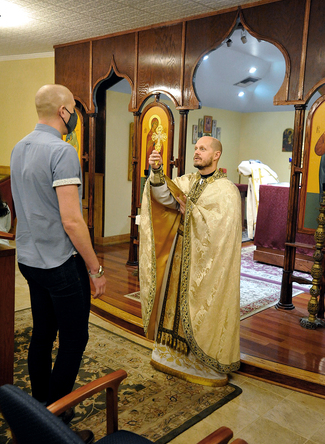 Spreading the word
Spreading the word
Father Gross is hoping word will spread of the mission’s existence to add to the small congregation of regulars. Some Eastern-rite Catholics may be attending Mass at local parishes but are unaware the mission exists.“We also have a lot of people who are Roman Catholic who come here maybe once a month because they enjoy the liturgy,” Father Gross said. “It’s not in opposition to anything; it’s just another form of expressing faith. Some people find it very helpful.”
Deacon Haddad’s grandparents were from Lebanon and were raised as Melkite Catholics.
“We’re open to everybody to come any time,” said Deacon Haddad, who has used his woodworking skills to adorn the church. “Even unchurched people are welcome.”
Religious of the Sacred Heart Sister Jane McKinlay has attended the Sunday Divine Liturgy for 25 years.
“There is a sense of mystical and there is a sense of true worship – very little on rules and regulations and more on meeting God,” she said.
“Both my grandfathers and my great-grandfathers were Byzantine priests,” said Paul Mankovich, who was responsible for transferring several stained-glass windows from his home church in Pennsylvania to New Orleans. “I’ve been doing this all my life. Most Roman Catholics have never heard of us, so it’s a little bit of a surprise. I brought two really close friends here, and they really enjoyed it.”
The chapel has another unique feature: a large-stained glass window that used to be the bank’s drive-thru window.
The schedule for St. Nicholas Byzantine Catholic Church includes a 10 a.m. Sunday Divine Liturgy and a Liturgy of the Pre-Sanctified Gifts (vespers service with Communion) on Wednesdays at 7 p.m. For more information, call (504) 861-0806.




